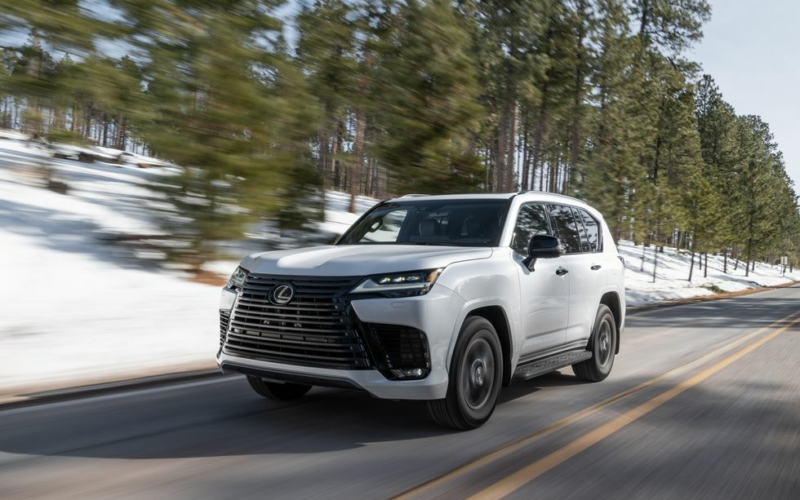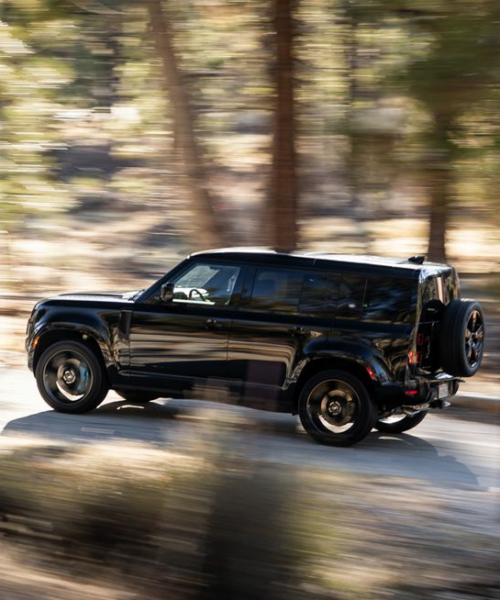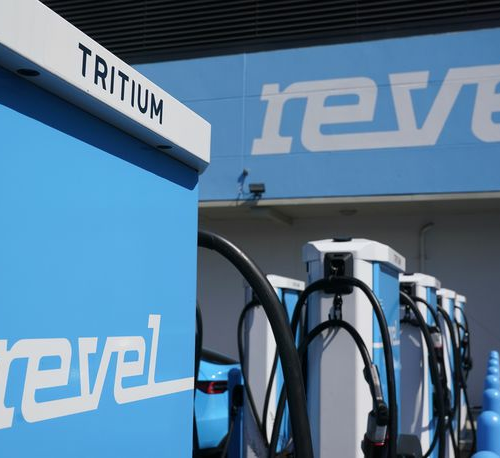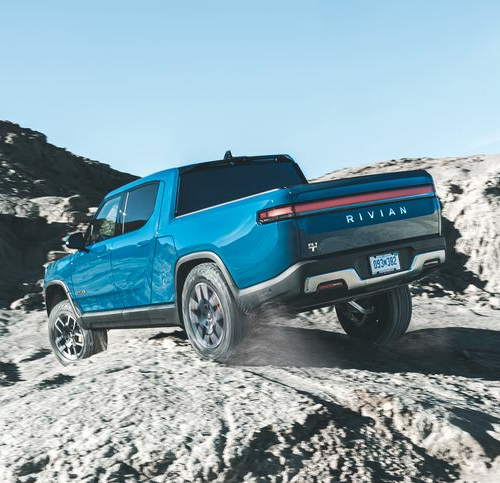BY DAN EDMUNDS | CarAndDriver.Com
Troy Warren for CNT #Cars
The formerly one-dimensional luxury offshoot of the Toyota Land Cruiser takes bold new steps to modernize itself for a wider audience.
The 2022 Lexus LX600 has a lot of weight on its shoulders. The only thing any previous LX had to be was the luxury version of the Toyota Land Cruiser. Indeed, the original LX450 was little more than an 80-series Land Cruiser with nicer leather sold by a more upscale dealer network. Over time, the LX’s styling and appointments evolved to be more distinctive, but even the presence of standard Active Height Control couldn’t offset how the Lexus grille treatment eroded the LX570’s ability to function as an off-roadable luxury SUV. That never much mattered because the Land Cruiser was there to scoop up the aspiring overlanders, but now the Toyota is gone from our shores, leaving the 2022 Lexus LX600 on its own.
But there’s more to the LX’s mission than mollifying the Land Cruiser faithful. Its new five-tier model spectrum now includes a base model, a volume-selling Premium grade, a first-ever LX F-Sport trim, a Luxury grade, and a range-topping Ultra-Luxury trim that seems destined to attract high-end livery companies and well-heeled buyers who prefer to sit in the right-rear seat. Lexus says the Premium, F-Sport, and Luxury three-row models will make up 85 to 90 percent of sales, which leaves single-digit crumbs for the $88,245 base, a two-row five-seater that offers zero options, and the magnificently expensive $127,345 Ultra-Luxury that has everything plus a pair of massaging rear recliners and a command center rear console that caps its max occupancy at four.

The LX retains body-on-frame construction, but it employs the new TNGA (Toyota New Global Architecture) F-series platform that Lexus calls GAF. The familiar 112.2-inch wheelbase remains, but the front and rear tracks are an inch wider. There are now six lug nuts instead of five, and electrically assisted power steering replaced the former hydraulic setup. There’s a familiar-looking pair of control arms up front and a live axle in back. Only the F-Sport gets a rear anti-roll bar, however, and the rear dampers lean forward instead of inward. This allows the body to crouch lower over the frame, letting Lexus ditch the previous removable rear jump seats in favor of an electrically deployed third row that folds into the floor.
Behind the wheel, the driving position is notably less bolt-upright and trucklike, and the comfortable new seats lower themselves significantly more than the outgoing Land Cruiser. The resulting crossover-cockpit feel is enhanced by a shifter and console that are closer in reach. A dual-screen infotainment system reserves audio, navigation, and (wireless) smartphone-mirroring functions for the 12.3-inch upper screen, with secondary HVAC, situational, and off-road controls reserved for the lower 7.0-inch display. The most often-used climate adjustments are made via physical controls. The result is one of the cleaner Lexus interfaces in recent memory. If only the Start button wasn’t so high up on the main infotainment bezel, where it’s easy to mistake for the smaller, higher, and slightly out-of-reach volume knob—and the stereo’s equalizer controls weren’t so deeply buried in the menus.

Underway, the first thing you’ll notice is the steering feels far less trucklike. The new steering system isn’t nearly as heavy immediately off-center, and that improves parking maneuverability and highway cruising alike. Effort buildup in corners feels more honest than in the BMW M240i xDrive we drove recently, and the old platform’s top-heavy initial roll is history. Twirling the drive-mode dial makes noticeable changes to the steering effort, the damping profile of the adaptive dampers, and the shift schedule of the 10-speed transmission. With the steering, though, it’s thankfully more about tightening the initial feel around center than merely cranking up the assist.
We’re also fans of the twin-turbo 3.4-liter V-6 and its 409 horsepower and 479 pound-feet of torque, which amounts to 26 more ponies and 76 more pound-feet than the 5.7-liter V-8 it replaces. This engine pulls hard but remains smooth, with none of the old powertrain’s occasional initial lurching, thanks to peak torque that arrives 1600 rpm sooner and more progressive throttle tip-in. Gearchanges are smooth, and even though this is a 10-speed, there’s no excess gear shuffling. Shift paddles are there should you desire to choose your gear, but that hardly seems necessary unless you’re selecting the optimal ratio off-road in low range. This powertrain is also far more economical, with EPA estimates of 19 mpg combined, 17 city, and 22 highway, easily exceeding the outgoing setup’s dismal 14 mpg combined. It can also pull a fair bit, with a new higher tow rating of 8000 pounds.

F-Sport and Luxury models roll on 265/50R-22 Dunlops, and both can add the hydraulic Active Height Control system as an option. A Luxury sample truck was so equipped, and it delivered a smooth, quiet, and settled ride over a variety of surfaces. The low-profile sidewalls did chatter a bit on washboard dirt, but no more than you might expect from such rubber. An F-Sport that we also sampled lacked Active Height Control but did have a sport-tuned version of the adaptive dampers, along with a Torsen limited-slip rear differential (all LXs have a lockable center Torsen), progressive-wound rear springs, and the aforementioned rear anti-roll bar. The result is a chassis that feels even lighter on its feet, but, as you might expect, a ride that tended toward flinty on the more frost-damaged roads we encountered above the snow line.

Still, we can fully see why Lexus expects the lower-spec Premium ($96,345) to be the volume seller. That price is barely $3000 more than the outgoing three-row LX570, and despite the lack of the height-control option, it’s a better vehicle in numerous ways. Its interior includes most of the essentials and looks fantastic, and it rides on 20-inch wheels and adaptive dampers. Our favorite option here might be the $1295 Appearance Package (also available on the Luxury), which blacks out the exterior trim and that admittedly massive front grille. It’s also a prerequisite for the no-cost 18-inch wheel-and-tire package, which the overlanders and Land Cruiser fanboys among us will surely appreciate. We managed some quality time in this configuration, and the extra sidewall absolutely proved its worth on local Forest Service dirt roads.
Whether the Premium with 18-inch wheels will be enough to appease the Land Cruiser faithful remains to be seen. Regardless, this kind of variety never existed in the LX lineup before the 2022 Lexus LX600 arrived. The new LX600 is clearly eons better and far less one-dimensional than the one it replaces, and that certainly will be enough for most buyers.



































